I’ve been around the ham community about 15 months and I’ve learned some critical information.
The right topic can inspire heated debate amongst the RF Nerds. Listen for a bit, form your own opinion, and then keep your mouth shut! :) You know, just like most people do politics or religion.
I’m sure there are more, but so far I’ve discovered that SWR (note there is no S on the end), CB Lingo (you’re not a mug and you don’t have a handle), lightning protection (is it a moot point or absolute necessity?), and mobile antenna installation (through the roof or mag mount?) are hot button topics.
Personally, I’ve never been one to shy away from controversy, and I’m proud to say, we’ve already touched on most of these topics in our very short lifespan as net.
Tonight, though, I want to touch on a different controversial topic – coax. So let’s dive in and take a look…
It’s best to start off with a few definitions.
Impedance is the resistance to the flow of electricity. Measured in Ohms.
Attenuation is how much signal you lose over a given length of feedline.
Velocity Factor is the speed at which electromagnetic energy travels through coax when compared to speed in a vacuum.
Feedline is a generic term for any line that transfers radio frequency (RF) power from a transceiver to an antenna.
Coax is a more specific term referring to a particular type of transmission line. It gets its name from its geometric design: there are two (co-) concentric (-axial) wire conductors. Specifically, coax consists of an inner center conductor of solid copper wire, surrounded by insulation (also called dielectric), surrounded by a conductive copper mesh braid (also called shield) and then finally, another layer of outside insulation. If you remember the old “Gobstopper” candies, just picture one of those cut in half, and that’s what the end of a piece of coax looks like. Typically, coax is used for UHF/VHF work. Radios and antennas are both designed to work with 50 ohm coax.
Ladder line is another specific type of feedline that consists of two parallel wires separated by an insulating material. Sounds complicated, but you’ll know instantly what it is the first time you ever see it because it looks just like ladder rungs. Ladder line is the most common feedline for random-length dipoles and is best for HF work.
Going back to our topic on SWR. All feedlines have loss. Loss in feedline comes down to three factors: the construction of the coax, the frequency of the signal, and the length of the run. Frequency and length are usually non-negotiable, but you do have control over the coax construction since it’s your decision as to what you buy.
Quality coax construction is based on two factors: the coax shield and the dielectric. Specifically, you want to look for a thick, tight, braided shield for the lowest loss. Some coax, like Beldon 9913, actually has two outside shields. A foil material that covers the dielectric and on topic of that, the copper braid. Naturally, it’s pretty stiff.
The type of material used in the dielectric determines its loss. Remember dielectric is the white material that separates the inside wire from the outside shield. Foam dielectric is insulation mixed with an inert gas. It is very low loss, but like Beldon 9913, it’s very stiff.
Coax loss is measured by the manufacturer and is reported in decibels of loss per 100 foot at a given frequency and with absolutely perfect SWR. So, the higher the number, the greater the loss. If you remember from the SWR topic, there is no such thing as perfect SWR. And as SWR increases, so does loss. So loss is important. But going back to construction, frequency and length… The shorter the run, the more loss you can get away with and HF is also particularly forgiving when compared to VHF and UHF.
The rules of thumb when it comes to coax are: use the best coax you can reasonable afford and use the feedline that provides the lowest loss at the highest frequency you are working. Also, remember coax breaks down over time. The older the coax, the higher the loss. This is yet another reason to use the best you can afford because SWR can be a moving target.
Why yes, it is expensive, Virginia. Depending on your length, the coax may be more expensive than your antenna. But consider this. You paid how much for your radio? And how much for your antenna? Do you really want to skimp on coax? If that doesn’t convince you… consider this one. An average antenna fed by quality coax will outperform a great antenna fed by low quality coax. Think of loss as NEGATIVE gain.
